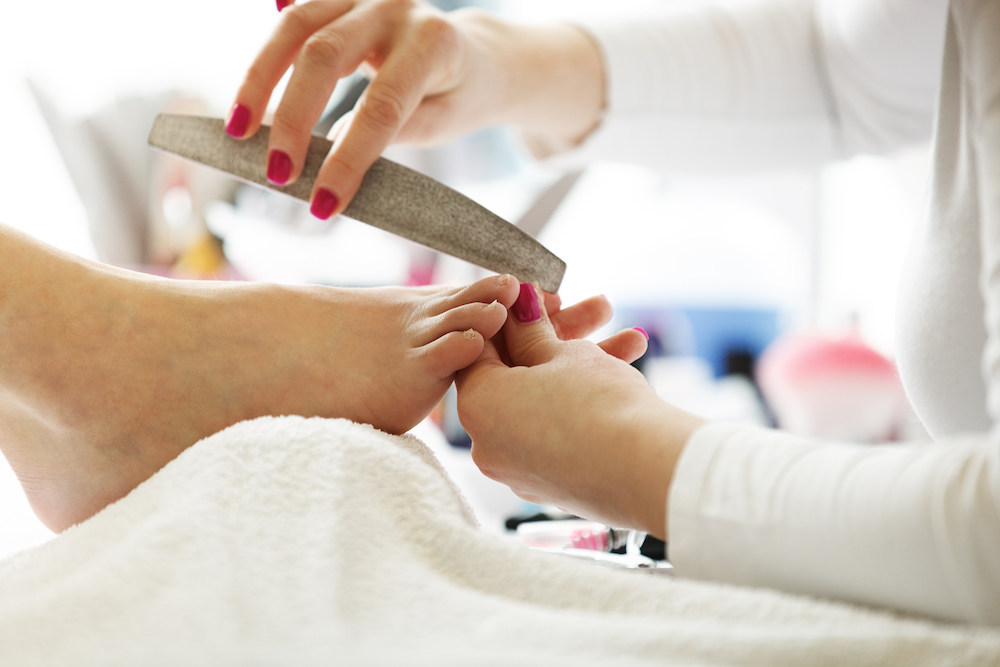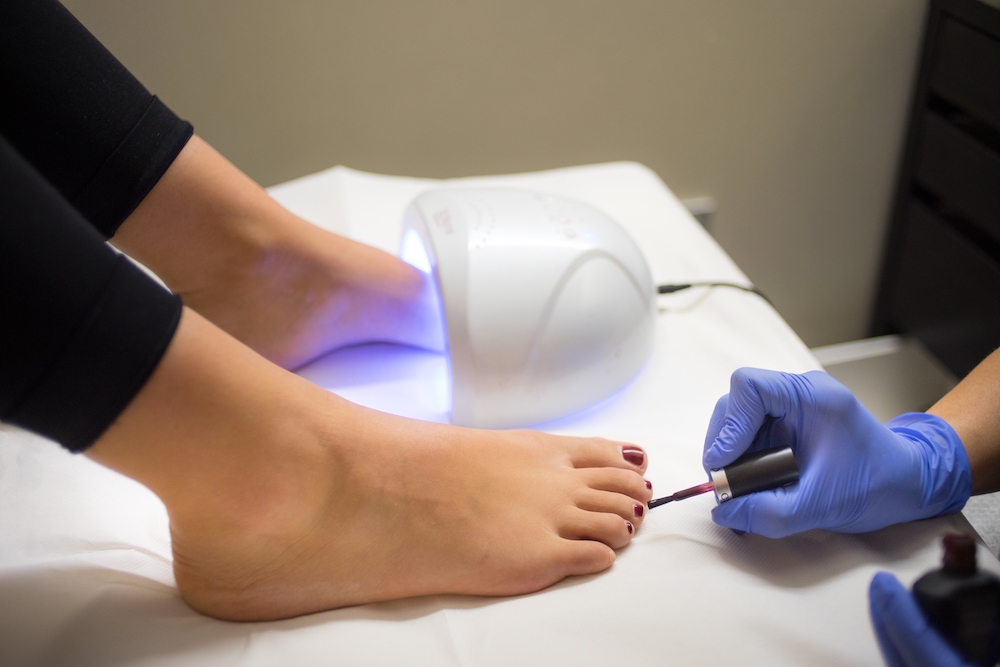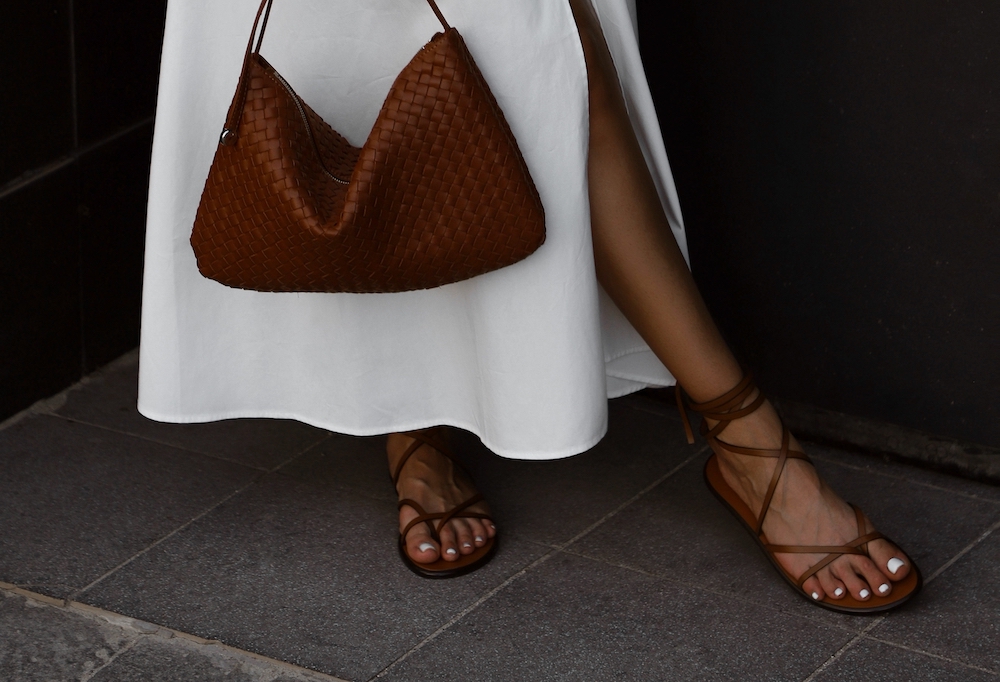We’ve quizzed the industry’s leading nail techs on how you can deliver the perfect pedicure for clients in salon every time
From the common troubleshooting issues to the importance of cuticle care, to getting your prep right and talking clients through the relevant aftercare, we answer all your queries so you can nail the treatment for each customer.
“The point of a pedicure is for your client's feet to look and feel much better than they did before they arrived,” says celebrity manicurist Roxanne Campbell, who is founder of Revarnish London. "The appearance and transformation are what clients love the most.”
How can I help my client’s pedicure service last longer?
It’s all about the prep, as Juanita Huber-Millet, founder of Townhouse and winner of Professional Beauty’s Nail Salon of the Year 2021 Award, explains. “Prep is a crucial part of the pedicure service and you should never cut corners as it creates the foundation for the final result,” she says. Indeed, prepping toes first is key, and this part needs to be tailored to whether you’re using lacquer or gel-polish in treatment.

“To make your client’s pedicure last longer you need to ensure the nail plate is sufficiently dehydrated and all oils are removed from it,” says Derby-based tech Melanie Lewendon, founder of Melanie Lewendon Academy. “If you’re using standard lacquer polish then this will increase the adhesion and the life of the service.”
She adds: “As gel-polish is a dry service, complete all your prep and gel-polish application before commencing with the scrub part of the pedicure. Don’t soak feet in water or apply product before gel-polish application as this could inhibit the gel’s adhesion.”
How long should a pedicure treatment take in salon?
A full pedicure usually takes around 60 minutes. “To plan the service you need to consider how much time it will take for you to complete each step,” explains Campbell.
“For example, you might want to spend 20 minutes removing your client's polish, shaping the nails and doing cuticle work on both feet, then you need to break down the remaining 40 minutes to complete the rest of the treatment.”
Pedicures should also be tailored to each client – as every client is different.
“For example, older clientele come to me because they can no longer do their own feet comfortably and need extra care,” explains Hampshire-based nail tech and educator Erin Searle explains. “They don't have any colour painted, they just want a tidy up and their skin cared for.
“However, my younger clientele want their skin looked after, but they also want glitter, nail art and colours, so my focus is more towards gel-polish application and making sure this will last.
“Each client gets the same routine, but I find tailoring the service to each person’s needs helps them get the best results.”
Which client type is ideal for lacquer, gel-polish and acrylic pedicures?
When it comes to which pedicure option clients should go for, it often comes down to personal preference, but there are some reasons why clients might be better suited to one service over another.
“Lacquer pedicures are good for those that would like to remove the colour themselves at home,” says Searle. “I have customers who don’t like gel-polish for this reason.”
Searle also explains that many of her mature clients book in for a pedicure for the massage and toenail care, so opt for lacquer if they’re less concerned about colour longevity.
Gel-polish is ideal for those who want a look that’s going to stay for as long as possible. “Gel-polish doesn't chip because it dries instantly and lasts much longer than regular nail polish, plus it provides a long-lasting, shiny finish,” says Campbell.

“Also, clients that want the quick in-and-out service aren’t coming in for the relaxation element, so they are best suited for gel-polish toes too.”
Meanwhile, Searle advises that acrylic pedicures are amazing for toe nail reconstruction. “I have clients that are runners who break their toenails or lose them. Acrylic pedicures can recreate a toenail and be painted to look as though nothing is different,” she says.
What troubleshooting issues can nail techs experience with pedicures?
One of the biggest challenges nail techs can face is dealing with ingrown toenails. “If a client has a severe ingrown toenail which is very painful, swollen or appears red, then you should refer them to a podiatrist who is trained to treat it professionally,” says Campbell.
This leads on nicely to the second most common issue, which is managing client expectations. “If a client hasn’t had a pedicure for a few years then they may assume a perfect end result which, depending on the state and condition of the skin, may not be possible,” explains Huber-Millet.
“Techs must explain to the client the realistic end result and recommend how to care for the feet in-between visits to ensure the best result each time,” she adds.
Keeping toenail length under control is important when it comes to a long-lasting pedicure too, as Katie Barnes, PB Award-winning nail artist and owner of the Katie Barnes Training Academy and KB Tool Range, explains.
“When toenails become too long, your client’s shoes will put pressure on the nail, causing discomfort and damage. Dependent on the period in-between services, clients can keep the length manageable with a nail file or nail clippers.”
In salon, you may also come across common conditions such as fungal nail infection, athletes foot and bruised nails, which are contraindications.
“Please remember, we’re not medically trained and although we may have an idea of what might be occurring, it is always advisable to encourage your client to seek medical advice before you can commence with any treatment,” says Lewendon.
There may also be occasions where you have a very ticklish client as well. “The best way to minimise injury to yourself and to the client is to keep any pressure firm,” adds Lewendon. “Ensure you have a full hold of your client’s foot at all times and ask them if there would be anything they do not want you to do.”
Also, you need to be prepared to treat clients with mobility issues too. “It may be that they are unable to lift their leg due to hip or back problems, so ensure your pedicure station is set up with the client in a comfortable position and that you are at the correct height to carry out the service,” says Lewendon.
“Where possible, leg rests are a great way of ensuring tech and client comfort, and offer your customer bolsters to prop and secure any area they need to make them comfortable. Always check the comfort of your client throughout the service.”
Top tips for delivering a perfect pedicure treatment
The goal is to make it relaxing. “Even when offering a quicker service, a pedicure is a treat for the feet,” says Barnes. “I put it in the same relaxation category as a facial. When kitting out your pedicure area, choose furniture that is as comfortable and aesthetically pleasing, and factor in the tech’s comfort and ergonomics when selecting this.”

Think of yourself too – “Make sure you’re always in the correct position during treatment,” says Lewendon. “Your health is as important as your clients’ and your career depends on your body working with you. Ensure you stretch, take regular breaks and keep sat up straight – not a slouched posture – when working.”
Check out these handy RSI and back pain prevention exercises you can do in salon.
Of course, practice makes perfect. “Practice as much as you can,” adds Campbell. “Build confidence in yourself, love what you do and never give up.”
Why is cuticle care so important in pedicure treatments?
“Cuticle care can often be overlooked in pedicures but good cuticle work will help you apply the gel-polish or lacquer closer to the cuticle for longer-lasting results and will offer a more flawless finish for the customer,” says Barnes.
“If product is applied to a nail where there is still skin or cuticle on the nail plate then it will cause the product to lift prematurely. It could also result in the product being picked off by the client, which can cause damage to the natural nail,” she notes.
What aftercare should I get clients to do at-home post-pedicure treatment?
The three key pillars to pedicure aftercare are: open-toe shoes, a weekly scrub and plenty of moisturiser. These steps are essential to make sure the results last. “When home care isn’t followed, the client’s feet are back to square one at their next appointment,” says Barnes.
She adds: “If a client particularly suffers from hard skin, then I also recommend using a foot file to keep this under control.”




square.JPG)